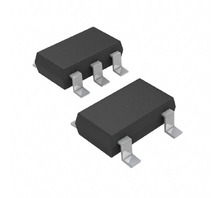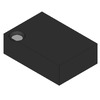Manufacturer Part Number
MIC5319-3.0BD5
Manufacturer
microchip-technology
Introduction
The MIC5319-3.0BD5 is a low-dropout (LDO) voltage regulator from Microchip Technology. It provides a regulated 3V output from an input voltage of up to 5.5V, making it suitable for a variety of applications that require a stable and reliable power supply.
Product Features and Performance
Fixed 3V output voltage
Low dropout voltage of 0.4V at 500mA output current
Output current capability of 500mA
Low quiescent current of 150μA
High power supply rejection ratio (PSRR) of 70dB to 60dB from 1kHz to 10kHz
Enable control feature
Over-current and over-temperature protection
Product Advantages
Compact and space-saving SOT-23-5 or TSOT-23-5 package
Reliable and stable performance in a wide temperature range of -40°C to 125°C
Efficient power management with low dropout voltage and low quiescent current
Key Reasons to Choose This Product
Provides a reliable and regulated 3V power supply for a wide range of applications
Offers excellent power efficiency and thermal management with its low dropout voltage and low quiescent current
Compact package size allows for easy integration into space-constrained designs
Robust protection features ensure safe and reliable operation
Quality and Safety Features
Over-current and over-temperature protection
Compliant with industry safety and quality standards
Compatibility
The MIC5319-3.0BD5 is compatible with a variety of electronic devices and systems that require a stable and regulated 3V power supply.
Application Areas
Portable electronics
Sensor and control systems
Industrial automation equipment
Telecommunications equipment
Automotive electronics
Product Lifecycle
The MIC5319-3.0BD5 is an obsolete product, meaning it is no longer in production. However, there are several alternative and equivalent models available from Microchip Technology, such as the MIC5319-3.3YD5, MIC5319-3.3BD5, and MIC5319-5.0BD5. Customers are advised to contact our website's sales team for more information on the availability and suitability of these alternative models.


 MIC5319-3.0YMLTR MLF6Micrel / Microchip Technology
MIC5319-3.0YMLTR MLF6Micrel / Microchip Technology MIC5319-2.9YMLMicrel Inc.IC REG LINEAR 500MA MICRO CAP
MIC5319-2.9YMLMicrel Inc.IC REG LINEAR 500MA MICRO CAP MIC5319-2.9YD5VBSEMI
MIC5319-2.9YD5VBSEMI